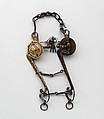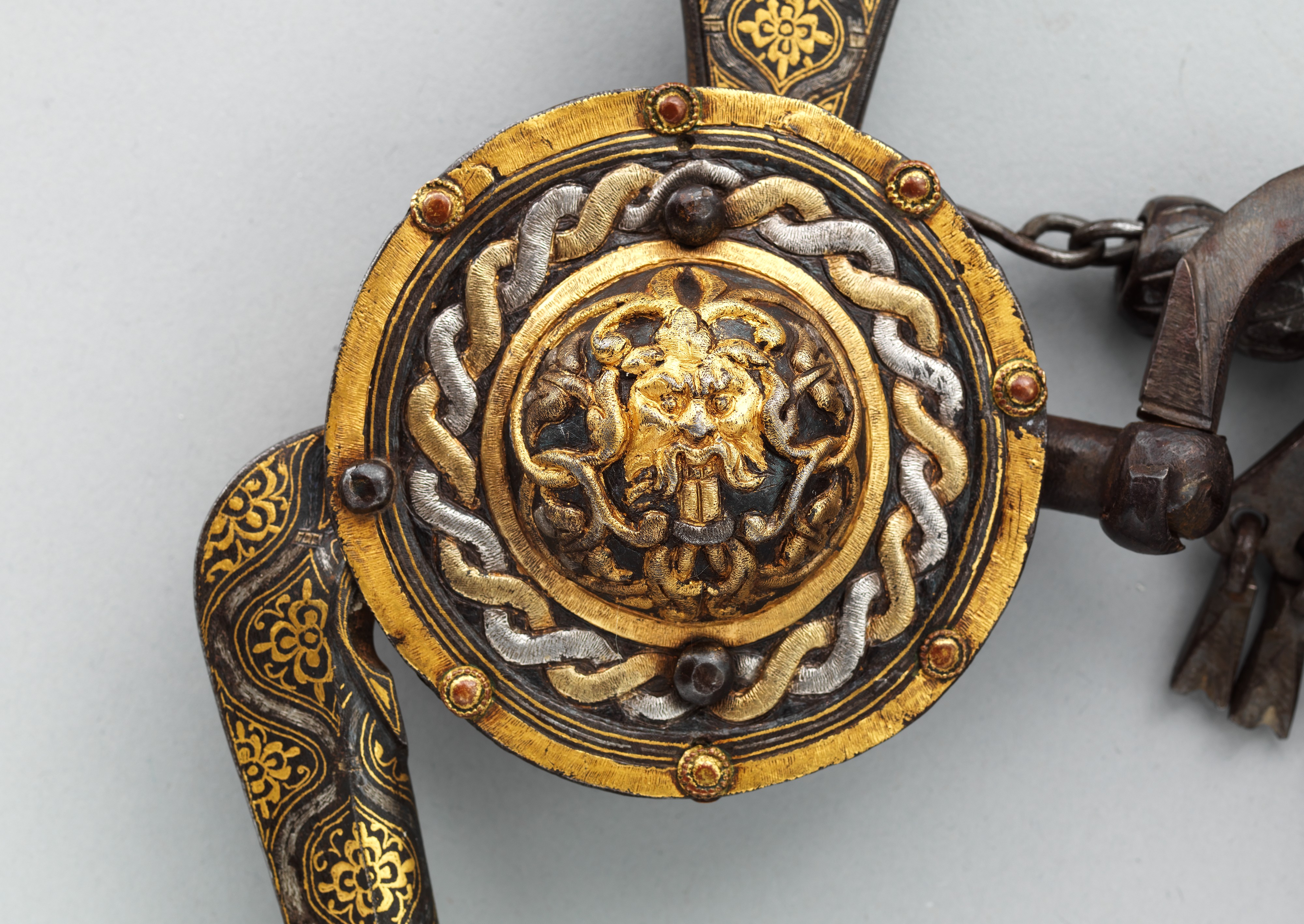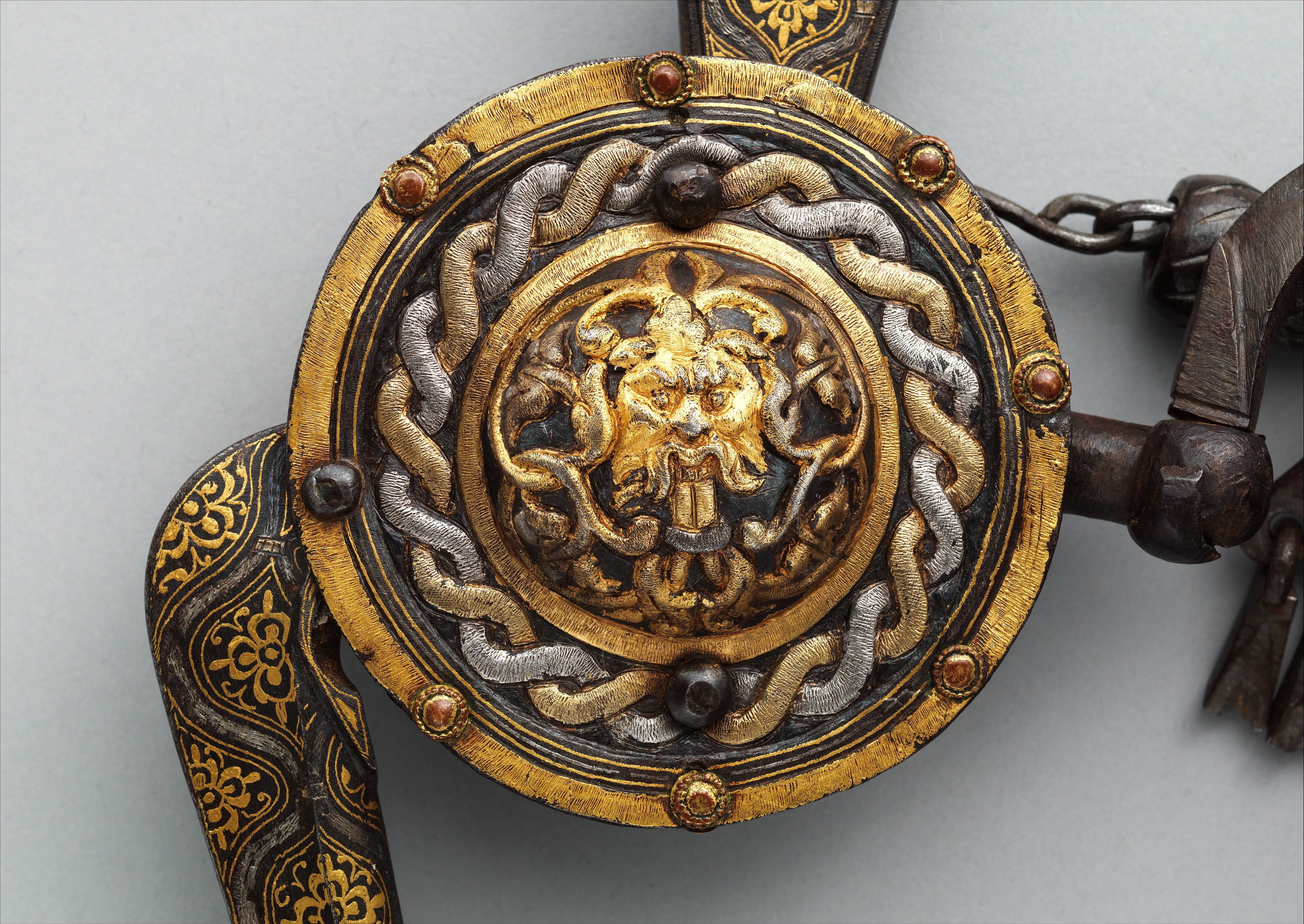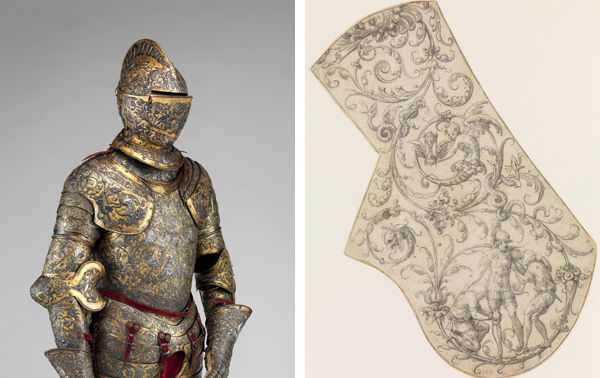Curb Bit
The iron shanks of this bit are entirely decorated with flowers and scrollwork damascened in gold and silver, including flowers and scrollwork. On each side, a circular iron boss, partly silvered and gilded, displays a grotesque satyr’s mask in vegetal scrolls. The workshop may have been in a hurry when making it though, as the two halves of the bit have been hastily decorated by two different hands, interpreting slightly differently the same given design. It was probably part of a horse tack commissioned for a particular event, and thus had to be delivered on time.
The mouthpiece is composed of a central high port from which hangs a triangular pendant used, like the thin watering chain attached above, ‘to entertain’ the horse, which, by playing with it with its tongue, would salivate and relax its jaw. Other rings, beads and rollers, now lost, would have been strung on the bars.
The bosses of this bit are actually identical to those attached to the Blaue Rüstung (the ‘blue armor’), a deluxe festival outfit for man and horse made in the 1550s in Italy for Archduke Ferdinand II of Further Austria (1529-1595), and composed of richly embroidered textile combined with gilded and silvered embossed metal pieces, all decorated with matching designs (preserved in the Kunsthistorishes museum, Vienna). It is known that Ferdinand had a slightly simpler set made for his page. It is possible then that this bit belonged to this lost ensemble, unless the workshop reused the same boss design for another commission. These rich tacks and their matching outfits were used during parades, carousels and equestrian games, often organized alongside tournament events.
Due to rights restrictions, this image cannot be enlarged, viewed at full screen, or downloaded.
This artwork is meant to be viewed from right to left. Scroll left to view more.






